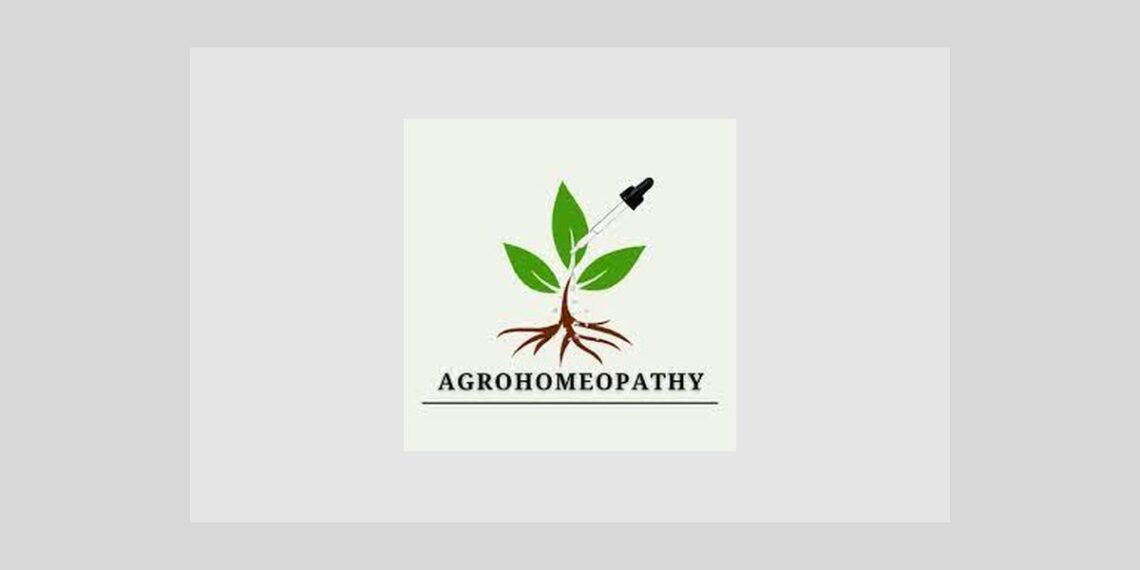One of the challenges made to homeopathy, is that it only works by placebo. What better way to dispel that notion, than by showing that plants respond to the remedies. Here we reference three studies using homeopathic preparations on plants, plus an anecdotal report on homeopathic preparations being used as fertilizer nutrients and to protect plants from pests.
Also in this issue, be sure to read Mark Moodie’s article, “Homeopathy for Plants” and the book review of “Homeopathy for Farm and Garden”.
—————————————–
Homeopathically prepared gibberellic acid and barley seed germination
B Hamman,1, G Koning1 and K Him Lok2
1 Department of Botany, University of Pretoria, Pretoria, South Africa
2 Department of Homoeopathy, Technikon of Natal, Durban, South Africa
Abstract
The potentisation process by which homeopathic preparations are produced raises the concern that these medicines have placebo effects only, since they theoretically no longer contain active molecules of the diluted substance. Plant models offer a method of examining the efficacy of homeopathically prepared solutions. This study examined the effects of homeopathically prepared gibberellic acid (HGA3) on the germination performance of barley (Hordeum vulgare L.) seeds. The effect of HGA3 (4-200 cH) on seed germination rate and seedling development was compared to that of the most commonly used form of gibberellic acid (GA3), 0.5 g l-1, and control (distilled water). The extent and type of response was dependent on the vigour level of the seedlot. Treating seeds from three vigour groups in HGA3 consistently resulted in larger seedlings. High-vigour seeds treated with HGA3 4, 30 and 200 cH germinated faster, and roots of medium-vigour seedlots treated in HGA3 15 cH were longer. Biphasic effects of HGA3 were also demonstrated. As a plant model, germinating barley seeds successfully demonstrated the ability of HGA3 to produce a biological response.
Homeopathy. 2003 Oct;92(4):195-202.
—————————————–
Effects of homeopathic arsenic on tobacco plant resistance to tobacco mosaic virus. Theoretical suggestions about system variability, based on a large experimental data set.
Betti L, Lazzarato L, Trebbi G, Brizzi M, Calzoni GL, Borghini F, Nani D.
Department of Agro-Environmental Science and Technology, Faculty of Agriculture, Bologna University, Italy. [email protected]
CONTEXT: This research aimed at verifying the efficacy of homeopathic treatments by plant-based bioassays, which may be suitable for basic research, because they lack placebo effects and provide large datasets for statistical analyses. OBJECTIVE: To evaluate the effects of homeopathic treatments of arsenic trioxide (As2O3) on tobacco plants subjected to tobacco mosaic virus (TMV) inoculation as biotic stress. DESIGN: Blind, randomized experiment using tobacco leaf disks. MATERIALS AND METHODS: Tobacco plants (Nicotiana tabacum L. cultivar Samsun) carrying the TMV resistance gene N. TMV inoculated leaf disks were floated for 3 days in the following: Distilled water (control). H2O 5 and 45 decimal and centesimal potencies. As2O3 5 and 45 decimal and centesimal potencies. The main outcome measures is the number of hypersensitive lesions observed in a leaf disk. RESULTS: Homeopathic treatments of arsenic induce two effects on the plant: (i) increased resistance to TMV; (ii) decrease variability between experiments (system variability). CONCLUSIONS: In this experimental model two actions of homeopathic treatment were detected: decrease in system variability and enhancement of the natural tendency of the system towards an ‘equilibrium point’.
PMID: 14587686 [PubMed – indexed for MEDLINE]
—————————————–
Homoeopathy for healthy farm produce
Pankaj Jaiswal, Hindustan Times
Lucknow, July 17, 2007
Homoeopathy works wonders on the human body. But apparently, it has the same effect on plants too, as an ascetic in Allahabad has proven. Over 400 farmers have shifted from chemical fertilizers and insecticides to his homoeopathic drugs and claim their crops have never been healthier.
For the last five years, Swami Paramananda has been using his mixtures on farm produce with great success. He has formulated six mixtures – Homoeo Amrit, Sanjeevani, Rakshak, Sudha, Jeevan and Vardaan. While the first two eliminate the need for DAP and urea, two widely used fertilizers, the others protect against a variety of plant disease and pests. “Potatoes grown using my mixtures don’t shrivel up even months after harvesting. They don’t require cold storage too,” he says. “Farmers find these (mixtures) economical, effective and healthy. One little snag is that spraying can be laborious.”
What’s more, they are good for the environment too, Paramananda says. “Chemicals are damaging our soil. These medicines protect and conserve the soil, and increases yield.”
A government-appointed committee comprising the director general, Uttar Pradesh Council of Agriculture Research; director of agriculture management, UP; director of research, Allahabad Agriculture University; and two other scientists verified the results. UPCAR deputy director general Dr R.S. Rathore said: “We saw some visible effects and the farmers were satisfied. But we will give out the results only after three years of testing. However, we did see that homoeopathically-grown potatoes have a longer shelf life.”
Interestingly, Paramananda seems to believe the way to winning over the farmers is through their stomach. He has been holding community feasts that serve baati-chokha (stuffed wheat-flour balls and vegetables) made from homoeopathically-grown produce. The idea seems to be working too.
—————————————–
A team of Italian researchers, led by C. Cardella, observed the effects of homeopathic diluted weed-killer on lentils’ sprouting.
The researchers found that, based on a total of 68 observations, those lentils that were given a 8CH of the weed- killer had a tendency to sprout in greater numbers than those lentils given a placebo.
__________________
# # #
Alan V. Schmukler is a homeopath and educator. He is the author of Homeopathy: An A to Z Home Handbook. You can visit his website at www.healgently.com. Questions and comments are welcome at [email protected]





I was thinking about the use of homeo remadies in agriculture from the last couple of years i also discused with homeo friends but all were confused about the potancy and dose may used? I have read many articales from this site and now i m able to further research in agrohomeopathey this articale maximise my confidense for the resourch thanks aothor for writing and publishing this article.
G H Laghari
Sanghar Sindh Pakistan
Mobile +923007048479
Sir,
I am Agriculture Technocrat & very close to Farming Community.I have worked in Governmnt Seed Industry for more than 30 years, now working as Agro.Consultant in Organic Farming , Seed Technology, Horticulture, Contract Farming. Farmers are fed up with Chemical & FERTILIZERS & Want to adopt Agro Homoeopathy. Kindly sent me the articles in Agro Homoeopathy.
with Regards
Dr Balbir Singh
With
Dear Dr. Singh,
Here you will find many answers about agrohomeopathy:
https://hpathy.com/agrohomeopathy/
You might also consider Dr. Kaviraj’s book: Homeopathy for Farm and Garden.
Exciting! I am about to relocate to Queensland (Australia) to a place where the soil is so very poor and like glue when wet and like concret when dry.
Of course there is a need of organic matter but agrohomeopathy might / will help to turn things around more quickly. Thank you for all the hard work done.